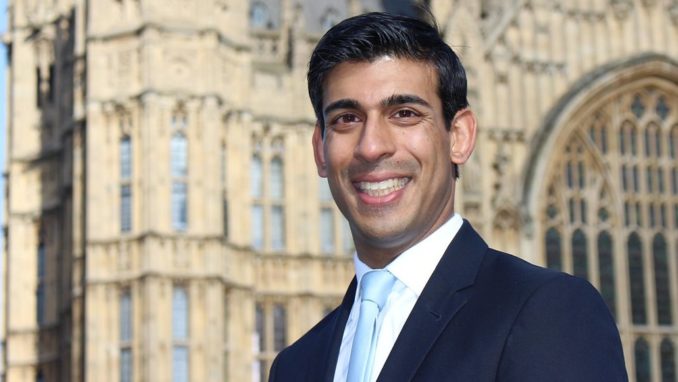
“Rishi Sunak MP – hi-res” by Ministry of Housing, Communities and Local Govt is licensed under CC BY-ND 2.0
After months of outright denials and fiery persistence that inflation is not a problem and never will be, central bankers in the US, the EU and other advanced economies are now being forced to face reality, as well as the consequences of their own actions. Instead of doing that, however, they have partnered up with their peers from the political world and together, they have embarked on a campaign to disperse and deflect the blame and entirely avoid accountability.
For months now, prices of basic goods and essential staples have seen steep increases and households in most major economies have been feeling the pressures mount on their budgets. From food prices to skyrocketing gas bills, the evidence is clear and one doesn’t need to be an economist to understand what’s happening. By now, it is apparent to the average citizen and taxpayer that, contrary to the assurances of their political and institutional leaders, inflation is here and it’s here to stay. What is a lot more murky and nuanced, however, is who is to blame for it.
If one were to take the politicians’ and central bankers’ explanations at face value, it would appear that the inflationary pressures we’re currently experiencing are the direct result of the market participants themselves. The unprecedented fiscal and monetary policy excesses we saw over the last year and a half have absolutely nothing to do with it. Instead, it is all because of the greed of the supply side, namely the exploitative, profiteering instincts of evil capitalists, and the childish behavior of the demand side, i.e. the inability of the average consumer to manage their money as they are supposed to and resist the urge to spend it all at once. This is the gist of the narrative that is being pushed by top level officials of the Fed, the ECB, and other major central banks, and it is an explanation that is enthusiastically supported by the political establishment too.
This reaction is entirely understandable from a political point of view. For central bankers, it is essential to shift the blame elsewhere, lest they lose all credibility. After all, it was only a couple of months ago when they were still insisting that inflation basically doesn’t exist, or even if it does it’s only “transitory”, and anyone who is concerned that their massive money printing might eventually lead to higher prices is an ignorant alarmist. As for the political class, the reasons to adopt this narrative are even more straightforward: Throughout Western history, you’d be hard pressed to find a leader that politically survived an inflationary period. The last thing any government wants is to be remembered as the one that managed to usher in a tidal inflationary wave that will destroy whatever is left standing in the real economy after the damage that was already inflicted by the lockdowns and the forced shutdowns.
Nevertheless, despite what central planners may wish were true and the version of events they try so hard to promote to the public, the nature of reality remains unaltered. The basic principle of cause and effect, fundamental economic laws and plain common sense, all stand in stark opposition to the current mainstream narrative. Inflation occurs when there is a significant increase in the amount of money chasing the same goods. It’s as simple as that, it always has been and always will be. Every single historical case of inflation and hyperinflation involved increases in the money supply and this case today is no different. If anything, given the extraordinary interventions, the seemingly limitless money printing and the MMT-inspired spending sprees we’ve seen during the covid crisis, the inflationary era that we’re now entering is a textbook example of this phenomenon and if there is anything remotely surprising about it, is that it didn’t come sooner.
Of course, for those of us who have been watching this space closely for a long time, it was already clear even before the virus ever emerged that inflationary pressures have been at work for years. They didn’t manifest themselves in the price of a gallon of milk or in a quadrupled electricity bill, but they did push asset prices to absurd levels and totally worthless companies found themselves valued at levels that simply made no sense. This time, however, inflation is set to have a much more pronounced and consequential impact.
Apart from its obvious, direct effects on the average citizen’s finances, it also has the potential to trigger a much wider shift, politically and socially. In the aftermath of the covid crisis, the unimaginable economic devastation of the various “containment” policies and the sociopolitical schism they created in most societies, public trust is already deeply eroded. Adding extensive and prolonged financial hardship to this mix could have serious ramifications. This is especially relevant for gold investors. Seeing inflation take hold was far from surprising to those who have been holding physical gold and were aware of the inevitable consequences of fiscal and monetary recklessness. Physical precious metals are, of course, the best way to hedge against the diminishing purchasing power of fiat money, but they are also extremely reliable safe havens during periods of more widespread uncertainty and turmoil, much like the one we might be facing soon.
This article has been published in the Newsroom of pro aurum, the leading precious metals company in Europe with an independent subsidiary in Switzerland.
This work is licensed under a Creative Commons Attribution 4.0 International License.



